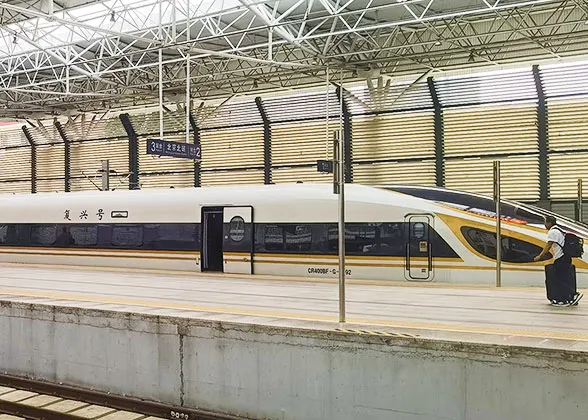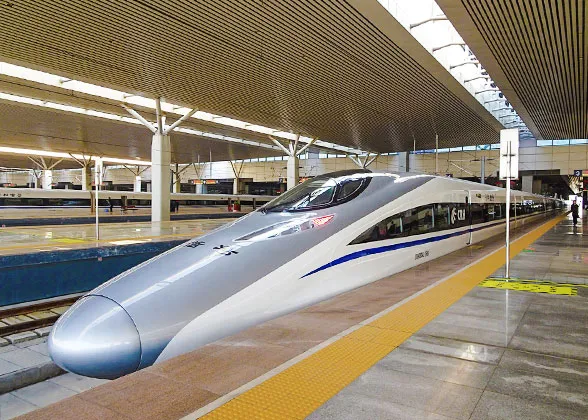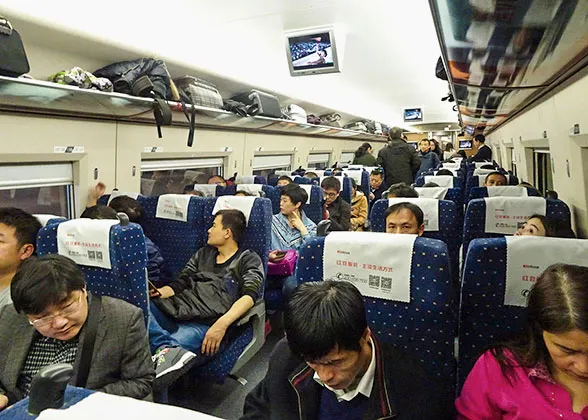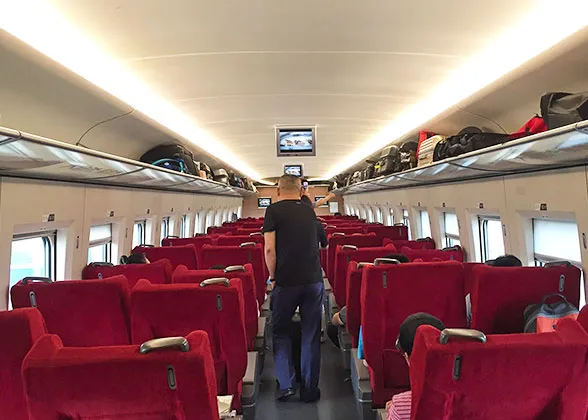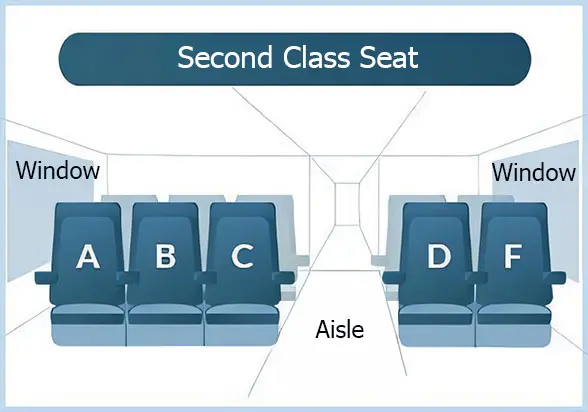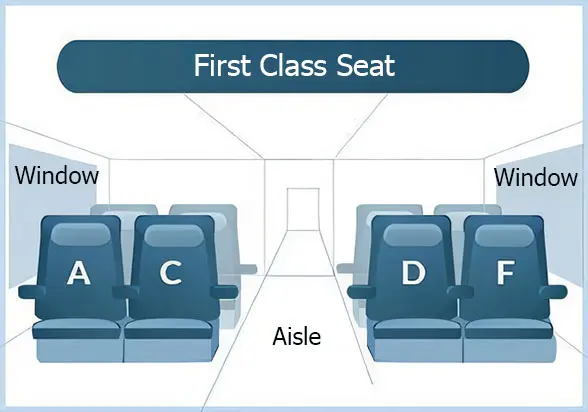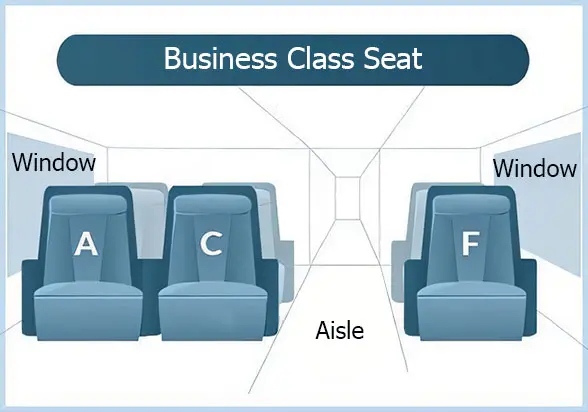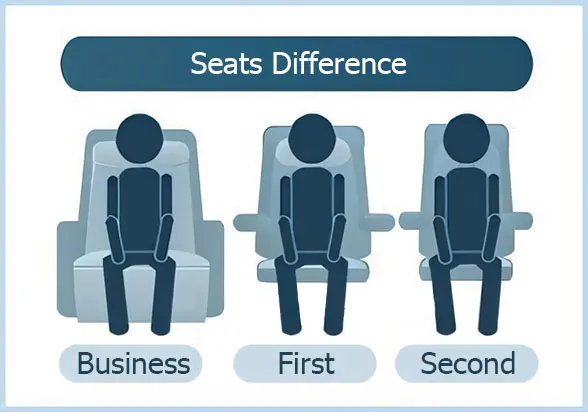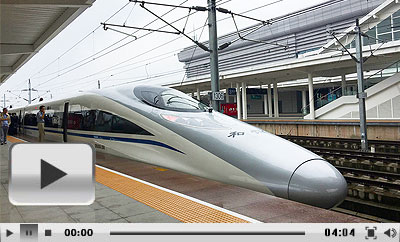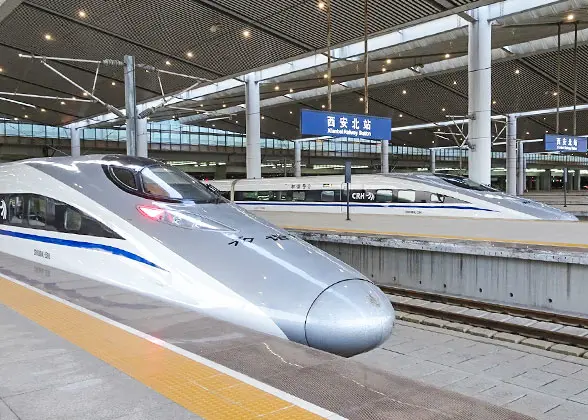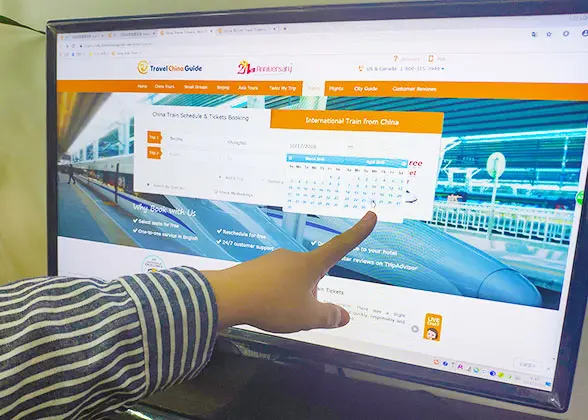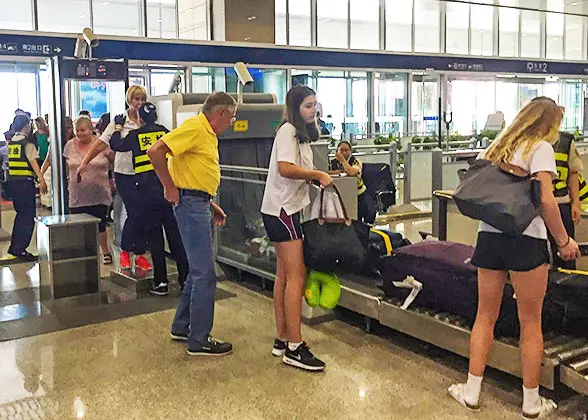China High Speed Train (Bullet Train)
Over 3,600 bullet trains numbered by G, D or C run daily connecting over 550 cities in China and covering 33 of the country's 34 provinces. Beijing-Shanghai high speed train link the two megacities 1,318 km (819 mi) away in just 4.5 hours.
By the end of 2024, China keeps the world's largest high speed rail (HSR) network with a length totaling over 48,000 km (29,825 mi). The world's longest high speed rail line, Beijing - Hong Kong High Speed Railway, extends 2,440 km (1,516 mi).
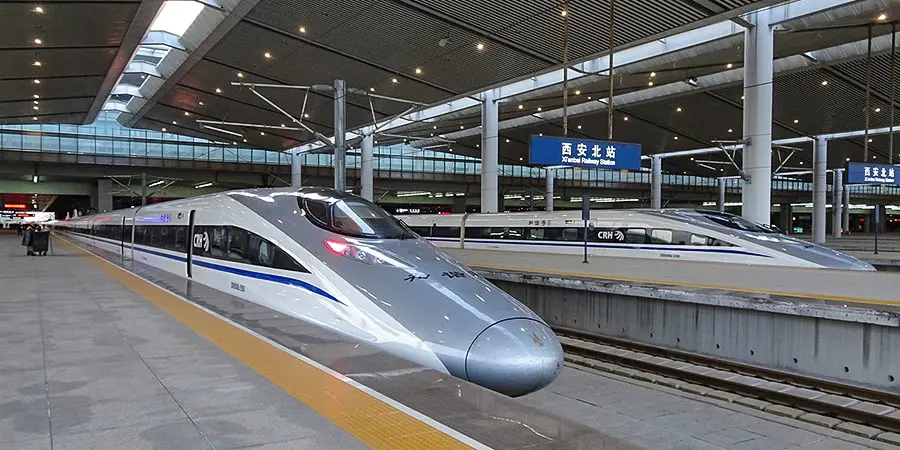 |
Top China High Speed Train Travel Routes:
| Hong Kong - Guangzhou Distance: 142km Travel time: 47min 2nd Class Seat Ticket fare: CNY 161 | Beijing - Xi'an Distance: 1,216km Travel time: 4.5h 2nd Class Seat Ticket fare: CNY 481.5 | Shanghai - Beijing Distance: 1,318km Travel time: 4.5h 2nd Class Seat Ticket fare: CNY 498 |
| Hangzhou - Shanghai Distance: 202km Travel time: 32min 2nd Class Seat Ticket fare: CNY 47 | Hong Kong - Shenzhen Distance: 39km Travel time: 14min 2nd Class Seat Ticket fare: CNY 68 | Xi'an - Chengdu Distance: 658km Travel time: 3h 2nd Class Seat Ticket fare: CNY 263 |
- Beijing - Shanghai
- Beijing - Pingyao
- Beijing - Guangzhou
- Beijing - Harbin
- Beijing - Tianjin
- Beijing - Badaling
- Changsha - Zhangjiajie
- Chengdu-Leshan-Emeishan
- Chengdu - Xi'an
- Chengdu - Chongqing
- Dali - Lijiang
- Guangzhou - Hong Kong
- Guangzhou - Shenzhen
- Guangzhou - Guilin
- Guangzhou - Yangshuo
- Guangzhou - Zhuhai
- Guilin - Guangzhou
- Guangzhou-Shenzhen-Hong Kong
- Harbin - Beijing
- Hong Kong - Guilin
- Hong Kong - Shanghai
- Hong Kong - Beijing
- Kunming - Dali
- Kunming - Lijiang
- Lijiang - Shangri-La
- Luoyang - Xi'an
- Nanjing - Shanghai
- Ningbo - Shanghai
- Pingyao - Xi'an
- Shanghai - Changzhou
- Shanghai - Guangzhou
- Shanghai - Hangzhou
- Shenzhen - Hong Kong
- Shanghai - Nanjing
- Shanghai - Suzhou
- Shanghai - Hefei
- Shenzhen - Guilin
- Suzhou - Shanghai
- Shenzhen - Guangzhou
- Shanghai - Xi'an
- Shanghai - Huangshan
- Shanghai - Yiwu
- Shanghai - Ningbo
- Tianjin - Beijing
- Xi'an - Beijing
- Xi'an - Shanghai
- Xi'an - Luoyang
- Yiwu - Shanghai
China High Speed Train Types
|
|
Gao Tie in Chinese, this type of trains usually run on high speed railways connecting major cities in China with a top speed of up to 350 km/h (217 mph), the highest of all high speed trains. It has become the first choice for most long-distance rail travelers. They are in white or silver. Diverse seat types are set including business class, first class and second class seats to meet the travel needs of different passengers. Besides, G trains have advanced facilities such as Wi-Fi signals.
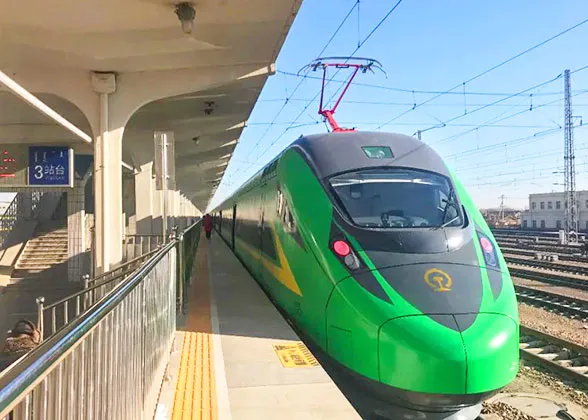 |
| Intercity High Speed Train |
Called Dong Che in Chinese, they run on both high speed rails and normal speed rails between cities of different sizes at a top speed of 250 km/h (155 mph). Also painted in white or silver, they are often divided into first class and second class carriages. Some D trains run overnight, mainly equipped with sleeper carriages. Although slower than G trains, D trains are often more cost-effective.
C trains, or intercity high speed trains, and Chengji in Chinese, are mainly in green and run between two adjacent cities. Their top speed is generally not over 200 km/h (124 mph). First and second class seats are always provided on C trains while some also have business class seats. As they run for a short distance, sleeper carriages are usually not available.
Presently, these trains are mainly served by the popularized Hexiehao and the new type Fuxinghao.
| Hexiehao (CRH) | Fuxinghao (CR) | |
|---|---|---|
| Top Speed | 300 km/h (186 mph) | 300-350 km/h (186-217 mph) |
| Appearance | Silver or white with blue belt | Silver with red belt, or white with golden belt |
| Space | 370 cm high; narrower legroom | 405 cm high; wider legroom |
| Electrical Socket | Standard type under the seats | Standard and USB types beside the seats |
| Wifi | Partially available | Available on all |
| Types in Service | CRH380A, CRH380B, CRH2, CRH3C… numbered by G, D or C | CR400AF & CR400BF numbered by G or C |
|
|
They are the most popular among passengers traveling by high speed train. They are arranged 3 – 2 in a row, whose space is like the economy class on an airplane. Second class seats have adjustable backrests attaching foldable small tables, but no footrests. Charging sockets are equipped on most second class coaches. It is the cheapest among all classes, which is recommended for budget travelers.
In first class coach, four seats are set in a row, with two on each side of the aisle, which is more spacious than the second class one. Therefore, it may be more suitable for “big guys”. The backrest of first class seat can be adjusted, but cannot be leveled. Passengers can place their feet on the footrest to feel more comfortable when half lying. There is a folding small table on the armrest of the seat for placing small items anytime. Its ticket price is higher than that of the second class.
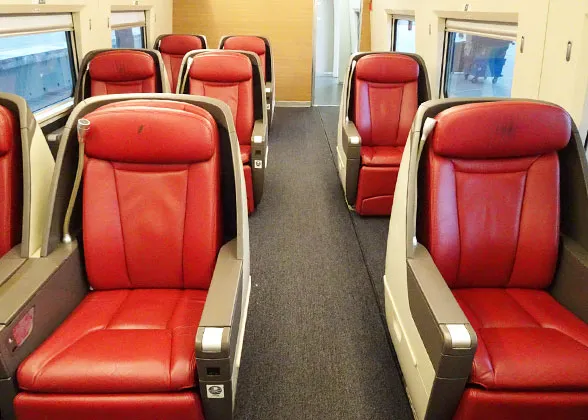 |
It is the most expensive among the three due to its large space and quality supporting services. There are three seats in a row, with one on one side of the aisle and two on the other side; some business coaches on Fuxing trains only have two seats in a row, one on each side of the aisle. The backrest can be adjusted to a horizontal angle for lying, comparable to those of the first class cabin on an airplane.
At some railway stations in major cities, business class ticket holders can enjoy supporting services such as special waiting rooms. Free meals and drinks may be provided onboard. However, not all high speed trains have a business class coach. They are often available on G trains. For businessmen or long-distance travelers with an adequate budget, this type of seat is a good choice.
|
|
|
|
On some overnight high speed trains, sleepers are available, divided into five types also:
| Sleeper Types | Layout | Available on |
|---|---|---|
| Soft Sleepers | 4 berths in each cabin | Hexiehao or CRH Trains, top speed 300km/h (186mph) |
| Deluxe Soft Sleepers | 2 berths in each cabin | |
| First Class Sleepers | 4 berths in each cabin | Fuxinghao or CR Trains, top speed 350km/h (217mph) |
| Second Class Sleepers | 6 berths in each cabin | |
| New Type Sleepers | berths arranged lengthwise along the aisle | Beijing - Shenzhen D902/ D901 Trains |
Sometimes standing room tickets are available when all seats are sold out. On some short inter-city high speed rail lines, China Rail Pass is available, which is a prepaid card for self-service check-in at a railway station.
Facilities on these highballs are of high standard, similar to those on an airplane. The seats can be rotated towards the moving direction; the seatback can be adjusted to a wanted angle; each passenger is offered a foldable small table; electrical sockets are available; and it is even possible to use Wi-Fi.
Why travel by high speed trains?
1. Fast:
2. Punctual:
3. Convenient:
4. Reasonably priced:
5. Comfortable:
6. Safe:
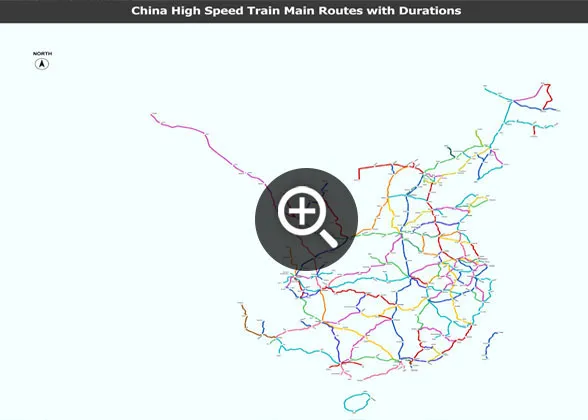 |
| More High Speed Railway Maps |
Since the earliest high speed rail line, Beijing - Tianjin Inter-City High Speed Rail Line opened in 2008, China has developed a dense high speed railway network reaching 48,000 km (29,825 mi) by the end of 2024, accounting for 2/3 of the world's high-speed rail tracks.
There are mainly four north-south and four east-west trunk lines, and some inter-city lines, greatly shortening the travel time within China.
According to the plan, the high speed rail will reach 60,000 km (37,280 mi) by 2030. The network will include eight north-south and eight east-west trunk lines, linking all big and medium-sized cities with a population of 500,000.
Currently, 22 countries and regions worldwide have bullet trains running on their land, including Austria, Belgium, China, France, Germany, Laos, Indonesia, Italy, Japan, Netherlands, Poland, Russia, Saudi Arabia, South Korea, Spain, Sweden, Switzerland, Taiwan, Turkey, United Kingdom, United States, and Uzbekistan. The total length has reached more than 65,000 km (40,389 mi) and the speed varies from 200 km/h (124 mph) to 350 km/h (217 mph). China high speed train tickets are the lowest cheapest among all.
